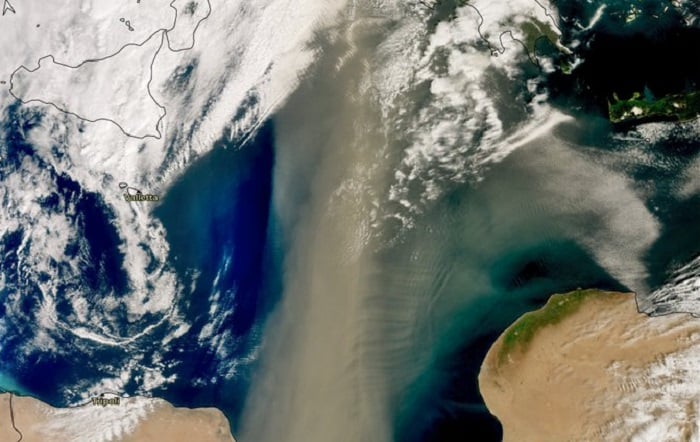
A huge Saharan dust cloud, measuring up to 800 kilometers (500 miles) in length, is moving towards Greece, meteorologists warned on Monday.
The dust and sand will hit Greece’s mainland on Tuesday, creating a suffocating atmosphere.
Epirus, West Sterea, Crete, Athens and Attica and the Peloponnese are the regions to be most affected by the phenomenon.
Meteorologists say the sand and dust in Greece will be carried by powerful winds caused by a combination of low and high pressure systems in the Eastern Mediterranean.
Formation of Saharan dust and sand clouds
In order for Saharan dust to impact systems around the globe, it first must become airborne and leave the Sahara Desert.
The Bodélé Depression is one of the most significant sites of Saharan dust and sand cloud formation. The depression is composed of dried lake beds which are now covered by dunes.
Winds moving at speeds between 6 and 16 m/s (13-35 mph) through this region pick up loose sediment, and transport the dust away from the Sahara.
Higher wind speeds, naturally, tend to generate larger dust events in this region. The highest output of dust from this region occurs from Spring through Fall.
Dust and sand associated with health problems
The African dust is associated with health problems in the general population in Greece, as it has been observed that in days with dust concentrations hospital admissions increased.
Research by Greek and foreign scientists, who have identified a whole list of hazardous heavy metals in the African dust that is “traveling” to Greece more and more over recent years — due to the increasing desertification phenomenon recorded in the Sahara — has sent shock waves through society.
According to measurements, the dust and sand that travels from Africa to Greece carries with it poisonous substances, including lead, zinc, chromium, vanadium, arsenic and nickel, in strengths that no one considered to be significant until now.



Comments
Post a Comment